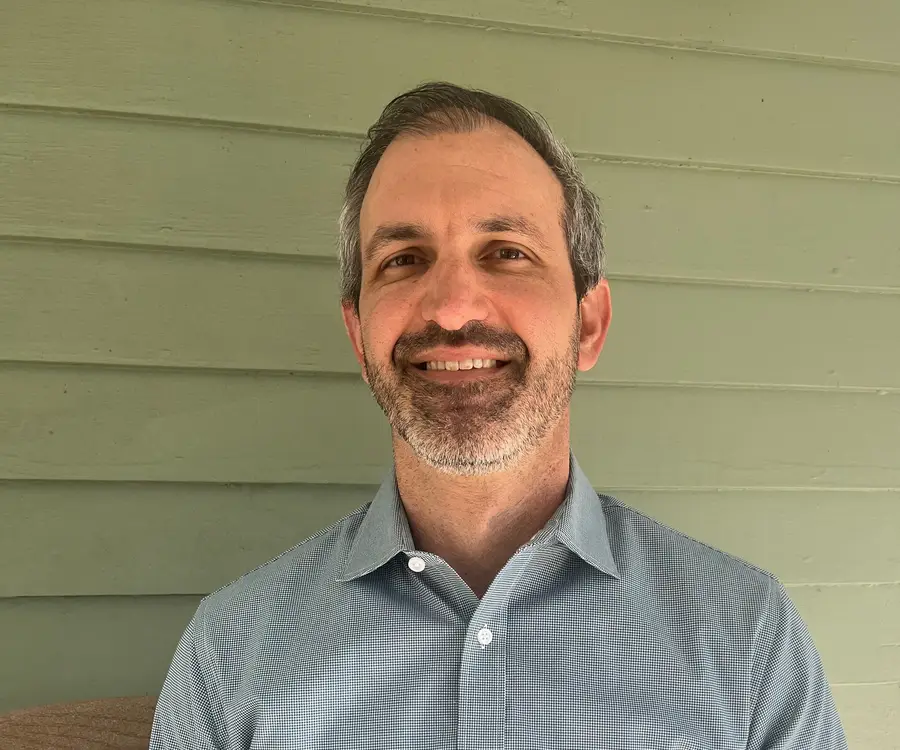
Daniel Lapidus, Climate Liaison and Director of Sustainable Food and Agriculture Systems at RTI, works at the intersection of the environment , agriculture, and food security, where these forces constantly shape each other. He has seen firsthand the importance of how economically viable and sustainable agriculture is to maintain our wellbeing.
From Local Farming to Global Climate Work
Lapidus knew from a young age that he wanted to help people. “I knew I wanted to do something that provided positive impacts to society.” After studying anthropology and premedical sciences at the University of Virginia, he worked on a chicken farm and on an avocado orchard internationally before joining the Peace Corps. He served in Ecuador for two years, providing support to small businesses led by indigenous Quichua women and harvesting crops. Often, the communities he was living in could only afford to eat one meal per day.
“My interest in agriculture was sparked by those experiences where I was working on farms and with farmers,” he said. “They were formative experiences.”
Building on his Peace Corps experience, Lapidus pursued a master’s degree in international economics at Johns Hopkins University. As part of his studies, he traveled to Bolivia and Rwanda supporting microenterprises and teaching English. There, he again saw the difficulty that people in low-resource settings have in accessing consistent, nutritious sources of food. These communities often rely on growing their own food, which has become increasingly difficult as natural disasters like drought and floods become more severe and fertile land becomes dry.
“Changes to environmental patterns like weather are very tightly aligned with my interest in agriculture because the folks that are most exposed and the most vulnerable to the impacts of them are people who grow their own food. They’re reliant on the rains and soil and temperature, which are very affected by these adverse weather patterns and natural disasters,” he said. In turn, many agricultural practices and byproducts have had devastating effects: agri-food systems are a major source of greenhouse gases, accounting for 31% of anthropogenic emissions.
Innovative Solutions for Agriculture and Climate Resilience
This feedback loop is difficult to break. In his previous role at the U.S. Department of Agriculture’s Foreign Agricultural Service, Lapidus worked to address the technical and economic barriers that contribute to this cycle in middle- and low-income countries, with a focus on low emissions development strategies from a policy and capacity building perspective. Seeking to pivot to applied, data-focused work, Lapidus joined RTI in 2015, where he has continued these efforts by valuing the socioeconomic impacts of technologies that can be used to implement these strategies, such as remote sensing like satellite imagery and drones, both internally funded and for clients ranging from international philanthropic foundations to federal agencies such as NASA, NIST, and EPA.
“Economics are important because they determine how resources are used. They can help you understand people’s incentives and how people make decisions. They determine who benefits and who doesn’t,” Lapidus said. “So I think studying that was a really important thing to do in order to better understand decision making and resource outcomes.” By viewing potential technologies through an economic lens and prioritizing ecological impacts, Lapidus helps organizations make decisions that can maximize the benefits to people while minimizing negative environmental consequences.
One of his particularly meaningful projects was on valuing the impact of early warning systems for riverine floods in Bangladesh. Lapidus explained “We looked at the value of those tools and found that it was more impactful to invest in strategies to get early warning messages out to communities than to invest in the technologies that would provide additional days of early warning. These kinds of findings can be helpful for policy-makers to better understand where to invest to avoid the worst impacts.”
Bright Spots for the Future of Sustainable Agriculture
Working to address issues surrounding environmental resilience can be challenging, but Lapidus feels there are some trends that are moving in the right direction. Public sector incentives, more ambitious commitments by the private sector, technological innovations, a movement to implement agricultural practices that benefit soil health, and a renewed focus on localized food systems all have the potential to strengthen communities’ social and economic wellbeing. “Progress is always slower than we want it to be, but I think people are more and more recognizing the impacts and wanting to do things about it,” he said. “I think there’s a lot of progress out there that we can build upon.”